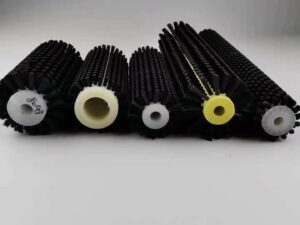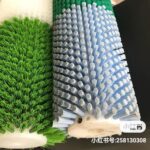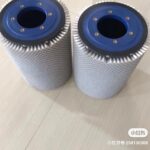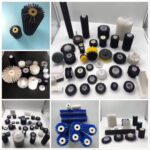Cylinder brushes and combs are essential hair styling tools that can help you achieve the perfect look. These tools have covered whether you want to create volume, detangle your hair, or smooth out those unruly tresses. But what exactly are cylinder brushes and combs, and what sets them apart? This guide will provide you with cylinder brushes and combs with all the information you need.
Introduction to Cylinder Brushes and Brush Combs
Cylinder brushes and brush combs are essential for cleaning and maintaining various surfaces. Cylinder brushes consist of bristles arranged around a cylindrical core, making them ideal for scrubbing floors, polishing metals, or removing debris from conveyor belts. They come in different sizes and materials to suit specific needs.
Brush combs, on the other hand, are used to clean and maintain cylinder brushes. They have evenly spaced teeth that remove tangled hair, lint, or other debris from the bristles, ensuring the brush remains effective for extended periods. Simply run the comb through the brush bristles, and it will quickly remove the accumulated dirt.
Both cylinder brushes and brush combs are user-friendly and efficient tools. They help you achieve a cleaner and more presentable environment without excessive effort. Regular cleaning and maintenance of cylinder brushes with brush combs will prolong their lifespan, saving you time and money in the long run.
What is the Difference Between a Comb and a Brush?
While both combs and brushes serve the purpose of styling hair, they differ in design and functionality. Here are the key points that highlight the differences between combs and brushes:
Structure
Combs are typically flat and compact and feature evenly spaced teeth, fine or wide-toothed depending on the intended use. On the other hand, brushes have bristles, which can be made of materials such as boar bristles, synthetic fibers, or metal pins, and are attached to a handle or base.
Detangling
Combs excel at detangling hair due to their teeth, especially wide-toothed combs, which are ideal for thick, curly, or tangled hair. Brushes, with their bristles, are more suitable for gently smoothing and distributing natural oils from the scalp to the hair shaft.
Styling
Brushes are commonly used for creating different hairstyles and adding volume to the hair. Combs are more suitable for precise parting, smoothing, and evenly distributing hair products. Their bristles can lift the hair from the roots and help achieve desired shapes and textures.
What type of Cylinder Brush or Comb do I need to style hair?
Choosing the correct type of cylinder brush or comb depends on your hair type, texture, and style you wish to achieve. Here are some suggestions:
Cylinder Brushes
- Round Barrel Brush: Ideal for creating volume, curls, and waves. Smaller barrel brushes work best for short hair, while larger ones suit long hair.
- Vent Brush: Perfect for fast drying and adding volume to the hair. The vents allow air to flow through the brush, reducing drying time.
- Paddle Brush: Great for detangling and smoothing long, straight hair. You can also use it to create sleek ponytails or updos.
- Teasing Brush: Designed for backcombing and adding texture to the hair. It helps in creating volume and height for various hairstyles.
Combs
- Wide-Toothed Comb: Excellent for detangling wet, especially curly or textured hair. It minimizes breakage and frizz.
- Tail Comb: Perfect for precise parting, sectioning, and creating intricate hairstyles like updos and braids.
- Fine-Toothed Comb: Ideal for smoothing and defining straight hair or achieving sleek looks.

How to Clean Cylinder Brushes and Combs?
Regularly cleaning your cylinder brushes and combs is essential to maintain their effectiveness and ensure clean styling. Here’s a simple guide to help you clean your hair tools:
Step 1: Remove Hair
Start by removing any hair trapped in the bristles or teeth of your brush or comb. Use a pointed object like a rat-tail comb or your fingers to loosen and lift the hair away gently.
Step 2: Prepare a Cleaning Solution
Fill a bowl with warm water and add mild shampoo or liquid soap. Swish the water to create suds.
Step 3: Soak and Scrub
Place your brushes or combs in soapy water and let them soak for a few minutes. Then, use an old toothbrush or a clean brush to gently scrub the bristles or teeth, removing any product buildup or residue.
Step 4: Rinse and Dry
Rinse the brushes or combs thoroughly with clean water to remove any remaining soap. Shake off excess water and lay them flat on a clean towel to air dry. Make sure they are completely dry before using them again.
FAQs
How often should I clean my cylinder brushes and combs?
We recommend cleaning your brushes and combs at least once a month or more frequently if you regularly use hair products. This ensures they remain free of buildup and bacteria, promoting healthier hair.
Wrap up
Cylinder brushes and combs are indispensable tools for achieving a variety of hairstyles. Understanding the differences between brushes and combs and choosing the right type for your hair can greatly enhance your styling experience. Remember to clean your brushes and combs regularly.



